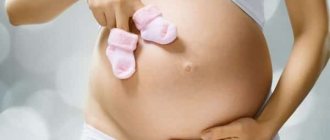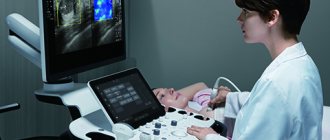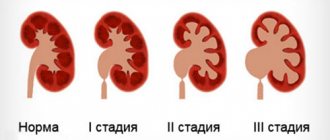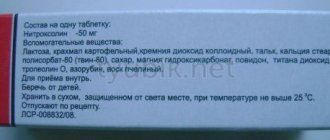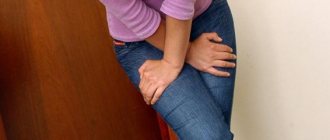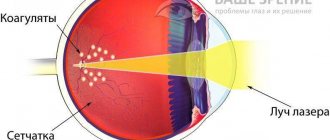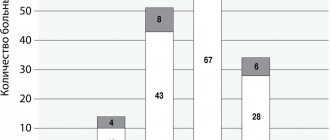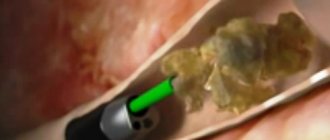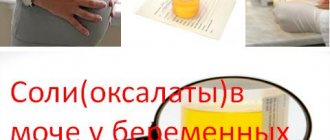What kind of pathology
WARNING!
The information on the site is provided for informational purposes and cannot be used to make a diagnosis or make treatment decisions. Urolithiasis in pregnant women occurs in rare cases. About 1 woman in 1000 experiences this. The formation of stones in the renal pelvis is not a reason for interrupting gestation.
In case of complications, gestosis may develop, which provokes the inability to bear a child. The etiology of stones is not fully understood.
Risk factors may vary from person to person. This is affected by:
- ecological state of the environment;
- metabolic disorder;
- congenital pathologies of the kidneys and urinary tract;
- Unhealthy Lifestyle.
The first symptoms are discomfort when urinating. Accompanied by pain that occurs due to a violation of the outflow of urine. Sometimes the passage of stones is completely painless - it all depends on their size.
In the later stages, this process becomes more complicated and is accompanied by the following symptoms:
- sharp pain in the lower back and abdomen;
- vomiting, nausea;
- increased sweating;
- weakness;
- malaise.
Urolithiasis in pregnant women may be accompanied by fever and chills.
When examined by a doctor, the palpation method causes increased pain. When a woman is at rest, unpleasant manifestations disappear.
Urolithiasis can cause the development of pyelonephritis. The disease can appear in the first trimester and have serious consequences.
The first symptoms of this disease can easily be confused with food poisoning. Therefore, a thorough and complete examination will be required. The doctor collects anamnesis, prescribes an ultrasound examination of organs and a urine test.
Pregnancy and kidney stones
Contrary to popular belief, pregnancy provokes urolithiasis - the formation of kidney stones.
The fact that it is during the period of waiting for a child that urolithiasis worsens is associated with hormonal changes in the body and changes in the water-salt balance. Pregnancy is a catalyst for urolithiasis, which has developed before, but in a latent form.
The “culprit” of the changes is the hormone progesterone, which is produced in the female body in huge quantities. In addition to relaxing the uterus and preventing hypertension, progesterone also acts on the receptors of the urinary system.
The muscle layer relaxes, the ducts expand, which promotes the advancement of existing stones. Also, during pregnancy, the outflow of urine is disrupted due to compression of the walls of the bladder by the enlarging uterus.
This promotes the activity of pathogenic bacteria. Added to the problem are disturbances in the functioning of the thyroid gland, failure of calcium metabolism, and decreased immunity, which significantly increases the rate of development of urolithiasis.
Symptoms of urolithiasis depend on the location of the stone. Thus, small stones localized in the renal cup do not cause discomfort and are detected only during a random ultrasound examination.
If the stone is located in the pelvis, then large stones cause pain in the lower back. A stone stuck in the ureter causes spasms and severe pain radiating to the sacrum. You may also see blood in the urine. When a stone is located at the outlet of the ureter, the pain radiates to the groin, and urination is often difficult and causes pain.
Kidney stones pose a certain threat to pregnancy:
- colic irritates the muscle walls, bringing the uterine wall into constant tone, which in the initial stages provokes a miscarriage;
- the infection that causes inflammation passes to the placenta, causing infection of the fetus;
- Kidney problems cause premature birth.
All of the above problems relate to the acute phase of urolithiasis. In other cases, urolithiasis does not threaten the health of the mother and child. Diagnosis is complicated by the very fact of pregnancy, because in this position, radiographic methods are contraindicated for a woman. The only accessible and safe method is ultrasound.
It allows you to see the stones themselves, assess their size and location, but does not visualize the functionality of the kidneys and the extent of the inflammatory process. Other diagnostic methods come to the rescue.
The functionality of the kidney is revealed by urine analysis according to Zimnitsky and Nichiporenko. The first analysis is collected within 24 hours. The sediment concentration is then compared to normal values. If the kidneys are functioning normally, the fluid will dilute the sediment and reduce the concentration.
In renal failure, fluid accumulates in the tissues of the body, and various substances (glucose, protein) appear in the sediment. Reduced urine density occurs with pyelonephritis, and increased urine density occurs with glomerulonephritis. This symptom is also characteristic of gestosis. In the last months of pregnancy, the ratio of fluid intake and the total amount of urine per day makes it possible to identify hidden edema in order to reduce the load on the heart.
You should know the symptoms of renal colic in order to distinguish it from other pathologies:
- with an ectopic pregnancy, the pain is localized in the lower part, but the back does not hurt;
- gallstones give pain in the projection of the bladder, so the symptoms can be confused with hepatic colic;
- with radiculitis, the pain radiates to the hypochondrium, and sometimes to the leg in the thigh area;
- when the kidney is displaced or prolapsed, the pain subsides if the patient lies on her back or side, which does not happen with renal colic;
- with kidney tuberculosis, the symptoms are similar, but the number of leukocytes increases significantly;
- The symptoms of renal colic are similar to an attack of appendicitis. Here Pasternatsky’s symptom comes to the rescue: the patient is given a minor blunt blow to the lumbar region, and then asked to urinate. If red blood cells without hemoglobin are found in the urine, then Pasternatsky’s symptom is considered positive;
- exacerbation of pancreatitis is expressed by pain “in the pit of the stomach”, which spreads to the shoulder, hypochondrium, back;
- in case of cholecystitis and acute poisoning, the whites of the patient’s eyes turn yellow, and the number of leukocytes in the blood increases;
- intestinal obstruction is often confused with renal colic, but the final verdict is made after ultrasound diagnosis.
Kidney diseases are not an obstacle to pregnancy, but require professional diagnosis and high-quality medical support.
If you find an error, please select a piece of text and press Ctrl+Enter
Share link:
Treatment
Treatment of urolithiasis in pregnant women is complex. The patient is prescribed a special diet.
Additionally, medications and traditional medicine may be prescribed. In advanced cases, surgical intervention is performed. It all depends on how the pathology progresses.
Diet
The basic rule of the diet is to exclude salt, carbonated drinks, fatty, smoked foods. This diet is observed during treatment and to prevent the formation of stones.
| Prohibited Products | Authorized Products | Useful tips |
| black bread, cabbage, onion, garlic, radish, sorrel, salt. If you have swelling, you should not drink large amounts of liquid. | dried fruits, potatoes, cabbage juice, honey, cinnamon. If there are no contraindications, drink plenty of water | dishes should be boiled, steamed or baked; cranberry or watermelon juice should be added to the diet. |
Folk remedies
Popular remedies have a safer effect on the body than medications. This is their main advantage. Used internally to quickly dissolve and remove kidney stones.
| Ingredients | Efficiency | Preparation |
| Knotweed, strawberry and lingonberry leaves | Antiseptic, antibacterial, anti-inflammatory effect. Increases immunity, dissolves stones | Mix of herbs 1 tbsp. l. mix and pour 200 ml of boiling water. Leave in a dark place for an hour. Drink during the day |
| Rosehip (fruit), sage, strawberry and bearberry leaves | Have a diuretic, choleretic effect | Mix the ingredients in equal quantities and leave in a water bath for up to 30 minutes. Then leave for 1 hour. After filtration, drink within 24 hours |
| Lingonberry leaves, horsetail, calendula flowers, chamomile flowers, plantain leaf. | Has antiseptic, diuretic, antispasmodic, anti-inflammatory effects. Helps dissolve stones | Take one teaspoon of each ingredient and mix, pour 250 ml of boiling water. Leave for an hour and drink in small portions in one day |
| Flax seeds | Restores metabolic processes, has a wound-healing, anti-inflammatory effect | Pour 1 teaspoon into a glass of water and bring to a boil. Drink in small portions for 2 days, every 2 hours. The result is a fairly thick mixture. If necessary, it can be diluted with water |
| Dill seeds, chamomile and calendula flowers, coltsfoot leaves | Has an antispasmodic, wound-healing, choleretic effect | Take 1 tbsp for each plant. Then you need to pour in 200 ml of hot water and bring to a boil. Drink in small portions 3-4 times a day |
| Chamomile flowers, St. John's wort, plantain, mint, sage | Antispasmodic, analgesic, antiseptic, diuretic, hypotensive, sedative effect | The recipe will be useful if you are pregnant with urticaria. Each component will need 1 tbsp. The mixture is poured with boiling water and left for 45 minutes. You need to drink half a glass, 5 times a day. |
Medicines
Medicines are prescribed for severe and acute pain, to eliminate spasms. These medications are allowed to be taken during gestation.
| Name of medicine | Action |
| "Analgin" | Analgesic effect will help with renal colic |
| "Papazol", "No-shpa" | Antispasmodics eliminate the cause of the spasm, relax the walls of the ureter and facilitate easy passage of stones |
| "Furosemide" | Diuretic effect accelerates stone passage |
| "Cyston" | Promotes the dissolution of stones. |
Medicines are prescribed to prevent exacerbation and complications of this disease.
Operation
Kidney stones during pregnancy can be removed through surgery at any stage. The operations are performed under general anesthesia. There is a potential risk for mother and baby.
They are prescribed in the presence of large stones. The function of the organ is restored after such treatment without affecting the bearing of the child. Laser therapy is mainly used, in which the stones are completely destroyed.
Laparoscopy allows puncture access to the required organ. Using an endoscope, more stones are loosened and parts of them are removed.
The method of major surgery consists of a tissue incision in the projection of the kidneys. It is rarely used in modern medicine.
